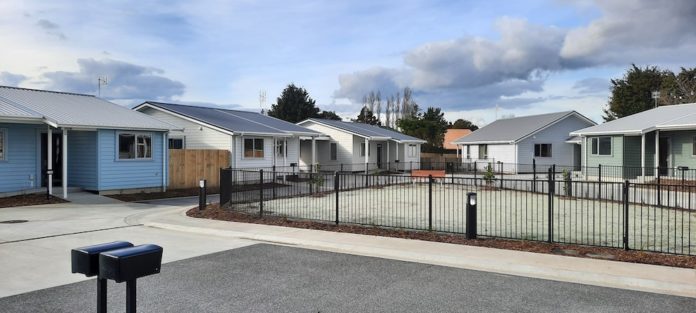The construction sector has a key role to play in delivering a zero carbon Aotearoa. And the new, revamped version of Homestar unveiled recently by the New Zealand Green Building Council (NZGBC) has been created to play a key role in achieving this goal.
The NZGBC says the average new house in New Zealand emits five times too much carbon pollution.
But now, all Homestar homes, under the fifth version of the green home rating, will have to use energy-efficient appliances.
A 6 Homestar home will have to hit mandatory energy and operational carbon targets. As you move up the star ratings to 10 Homestar, the emissions reductions and energy efficiency improvements increase.
The updated Homestar will also include an embodied carbon calculator, developed in partnership with BRANZ, to help builders work out the levels of carbon emitted in the manufacture of building materials.
And the new Homestar will align with the government’s Building for Climate Change programme. This will help builders using Homestar to develop the skills and knowledge needed for upcoming changes to the Building Code.
Besides cutting carbon pollution, the revamped Homestar gives increased importance to a number of other key areas, including:
• making it easier to keep a home warm in winter and cooler in summer,
• keeping it well ventilated and dry with fresh air,
• keeping household bills lower through energy and water efficiency,
• building with healthy, sustainable materials, and
• reducing the amount of waste being dumped in landfill.
Each of these areas must now hit a particular level to achieve a Homestar rating.
The NZGBC, the not-for-profit organisation behind Homestar, hopes that this will give home owners confidence that all Homestar homes rated under the improved scheme will be cosier, drier, healthier places than homes built to minimum Building Code levels.
NZGBC chief executive Andrew Eagles says making New Zealand homes better will help tackle climate change, and give families healthier, warmer and drier homes.
“Far too many Kiwi homes are cold, damp and unhealthy, pump out far too much carbon pollution in their construction and in the energy they use, and far too often saddle Kiwi families with high household power bills.
“That’s why we’ve launched the new update of Homestar — the most ambitious-ever version.
“We’re hoping that Homestar will provide healthy, cosy homes for thousands and thousands of families, and play a much needed role in slashing climate change pollution.”
The category names for Homestar have been changed too, to better reflect a renewed focus on outcomes.
Out go category names such as “density and resource efficiency”, “management”, and “site”, and in come “healthy and comfortable”, “efficient”, “liveable”, and “environmentally responsible”, alongside the innovation category.
The Healthy and Comfortable category is about improving winter comfort by making homes cosy and better insulated, improving summer comfort by reducing overheating, improving ventilation and making the home dryer.
It’s also about better natural light, decent acoustic performance so you hear less of your neighbours and they hear less of you, and reducing the quantity of unhealthy chemicals used in interior building materials and paints.
The Efficient category includes energy and water efficiency, and encourages smaller homes with higher density to reduce the amount of land area required.
A thriving, sustainable lifestyle is the outcome targeted in the Liveable category.
The credits here are all about being able to walk to get everything you need, being able to grow your own veggies, feeling safe, using sustainable modes of transport, and to recycle and compost.
The Environmentally Responsible category promotes a home where the home owner generates their own electricity, where they can manage stormwater onsite, adding to natural ecological cycles without burdening already stressed council networks, where they can regenerate land with native planting, and where the house was built with responsibly-sourced building materials with low embodied carbon.
Almost 5000 homes registered for Homestar last year, and the NZGBC expects even more uptake with these improvements.
The interest rate and cash back incentives banks offer for Homestar are also driving more people to ask their builders about it.
All of the improvements and updates to version five of Homestar have come about thanks to the feedback, suggestions and expert advice from NZGBC members.
The extensive consultation process — the council’s most successful ever — was a true reminder that Homestar is owned collectively by all those who want homes in Aotearoa to be greener, healthier and happier places.




